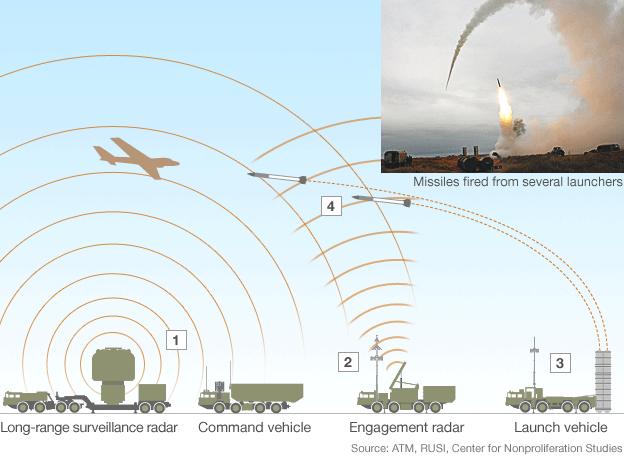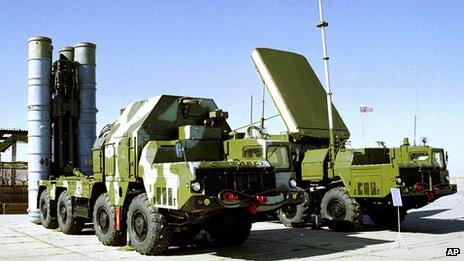Profile: Russia's S-300 missile system
- Published
The BBC News website profiles Russia's S-300 surface-to-air missile system, components of which have been delivered to Syrian President Bashar al-Assad's government.
In September, Russian President Vladimir Putin said shipments had been suspended, but that if the US and its allies intervened militarily in Syria, Moscow would "think how we should act in the future".
The S-300 is a series of highly capable, long-range surface-to-air missile complexes first deployed in the USSR in 1979 and later modified by the Russian armed forces.
As well as targeting aircraft, the fully mobile units have the capacity to engage ballistic missiles.
Experts believe that Russia is most likely delivering the S-300PMU-2 systems - also known by the Nato codename SA-20 - which were first introduced in 1997 and are comparable to the US Patriot Air and Missile Defense System.
The Russian batteries are made by a state-run company, Almaz-Antei, which last year announced it was stopping the production of the S-300s and switching resources to the more advanced S-400s.

How the Russian S-300PMU-2 missile defence system works

The long-range surveillance radar tracks objects over a range of 300km (185 miles) and relays information to the command vehicle, which assesses potential targets
A target is identified and the command vehicle orders the engagement radar to launch missiles
Launch data is sent to the best placed of the battalion's six launch vehicles and it releases two surface-to-air missiles
The engagement radar helps guide the missiles towards the target. It can guide up to 12 missiles simultaneously, engaging up to six targets at once
The vehicle used as a launcher is currently manufactured at the Minsk Wheel Tractor Plant (MZKT) in Belarus, although Russia is now shifting the production to its western city of Bryansk.

Russian S-300PMU system specification

Specification: Each launcher vehicle carries four missile containers (two missiles per target). A full battalion includes six launcher vehicles with a total of 24 missiles, plus command-and-control and long-range radar detection vehicles
Special feature: Fires two missiles vertically within 3 seconds, making it versatile and accurate
Capability: Russian 48N6E are the standard missiles fired from S-300PMU launchers. They have a range of 5-150km (3-93 miles) at a maximum altitude of 27-30km (17-19 miles).
Response time: Vehicle stopping to missile firing is five minutes
Source: Royal United Services Institute
